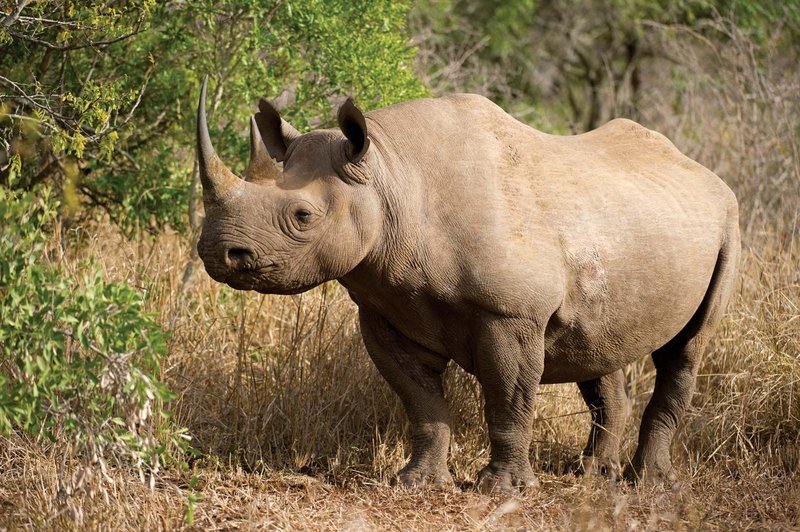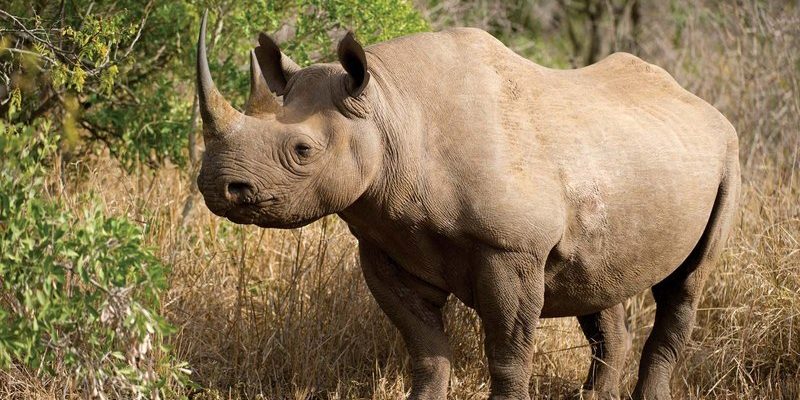
Inhabiting the dry regions of eastern and southern Africa, black rhinos are more than just a rare sight on a safari. They’re vital to the savanna and woodland ecosystems they call home. Just like a well-placed piece on a chessboard, they help regulate the environment, influencing everything from plant growth to the survival of other species. So, grab a cup of coffee, and let’s dive into the role the black rhinoceros plays in its ecosystem!
Understanding the Black Rhinoceros
To appreciate the role of the black rhino, it’s essential to know a bit about them. These magnificent creatures are known for their hooked upper lip, which is specifically designed for grasping leaves and shrubs. Unlike their larger cousin, the white rhino, black rhinos are generally smaller and more agile. They range from 1,500 to 3,000 pounds, but don’t let their tough exterior fool you; they can be surprisingly swift and nimble.
Habitat-wise, black rhinos are adaptable. They can thrive in various environments, from bushy savannas to dense forests. This adaptability showcases their resilience, but it also highlights how they interact with their surroundings. By grazing and browsing, they shape the landscape, influencing the types of plants that flourish. This is where the magic happens; their feeding habits help maintain the health and diversity of their ecosystems.
Another interesting aspect is their solitary nature. Black rhinos are typically found alone or in small groups, which means each one plays an individual role in its habitat. Think of it like a unique puzzle piece that fits perfectly into the larger picture of the ecosystem they inhabit.
The Black Rhinoceros and Plant Diversity
One of the most significant roles the black rhinoceros plays is in promoting plant diversity. By feeding on a variety of shrubs and trees, they prevent certain species from dominating the landscape. Imagine a garden where one type of flower takes over; it wouldn’t be as vibrant, right? The black rhino helps keep the ecosystem colorful and diverse by eating what they need and allowing other plants to thrive.
Their browsing habits facilitate the growth of new plants and encourage the growth of grasses. This is crucial because a healthy plant community supports various animal species, from insects to larger herbivores. By ensuring that different plants can grow and flourish, black rhinos indirectly support a wide range of wildlife.
Additionally, by creating small clearings in dense vegetation, they help promote sunlight access for smaller plants. Think of it as a sculptor shaping a masterpiece; the black rhino helps mold its environment to be more balanced and diverse, contributing to a robust ecosystem.
Seed Dispersal and Its Importance
You might be surprised to learn that black rhinos also serve as seed dispersers. As they munch on fruits and foliage, they inadvertently transport seeds throughout their territory. When they digest the food and later excrete it, the seeds are deposited in new areas—often with added nutrients to help them germinate. It’s nature’s way of recycling!
This process is vital for maintaining genetic diversity among plant populations. When seeds spread over a larger area, they have a better chance of thriving in different environments. It’s fascinating to think that a simple act, like eating, can have such a significant impact on the entire ecosystem.
Moreover, this seed dispersal serves as a foundation for new plant growth, which benefits various animal species. These plants provide food and shelter, creating a thriving web of life that depends on one another. So, the next time you hear about the black rhino, remember that it’s not just about the size or strength; it’s also about the hidden contributions they make to the environment.
Impact on Other Wildlife
The presence of black rhinoceroses profoundly impacts the wildlife around them. Their movement through the brush creates trails that other animals use for travel and foraging. Picture a well-trodden path in a forest; it’s easier for smaller creatures to navigate and find food when a larger animal has already paved the way.
Furthermore, their grazing helps maintain open spaces in the landscape. These clearings benefit smaller herbivores like antelopes and other animals that thrive in less dense vegetation. When more species can coexist and have access to food and shelter, it creates a more balanced ecosystem.
Predator dynamics also shift in response to the black rhino’s presence. Larger predators like lions or leopards may follow or hunt around areas where rhinos roam. By influencing the movement and behavior of various species, black rhinos help maintain the delicate balance of life within their habitat.
The Threats to the Black Rhinoceros
Unfortunately, despite their critical role in the ecosystem, black rhinoceroses face significant threats that put their survival at risk. Poaching is one of the most pressing issues, driven by the high demand for rhino horns in traditional medicine and as status symbols. This illegal hunting not only endangers the species but also disrupts the ecological balance they maintain.
Habitat loss is another major challenge. As human populations grow, more land is cleared for agriculture, settlements, and infrastructure, leaving black rhinos with fewer places to roam and feed. This diminishing habitat can lead to increased competition for resources among wildlife, further impacting biodiversity.
Conservation efforts are essential to protect these incredible animals. Organizations around the world implement strategies like anti-poaching units, habitat restoration, and community education to raise awareness about the importance of black rhinos in ecosystems. Protecting these animals isn’t just about saving a species; it’s about preserving the intricate web of life they support.
The Black Rhinoceros and Ecosystem Resilience
The black rhinoceros is more than just a remarkable animal; it plays a fundamental role in promoting ecosystem resilience. By maintaining plant diversity, dispersing seeds, and influencing other wildlife, black rhinos contribute to the overall health of their habitats. Their presence helps ecosystems withstand changes and stressors, such as climate fluctuations and human encroachments.
When ecosystems are resilient, they can recover more quickly from disturbances, whether natural or anthropogenic. This is essential for the continued survival of countless species, including our own. A healthy environment leads to cleaner air, water, and soil, benefiting all life forms.
By protecting black rhinoceroses, we’re investing in the health and stability of entire ecosystems. The impact of their role can ripple through the environment, creating a thriving web of life that supports both wildlife and human communities.
In the grand tapestry of nature, the black rhinoceros holds a unique and vital position. From promoting plant diversity to enhancing ecosystem resilience, their contributions are invaluable. Understanding their role helps us see why protecting them is essential—not just for their sake but for the sake of the environment as a whole.
So, the next time you marvel at a black rhino, remember all the incredible work it does, often without us even noticing. By supporting conservation efforts and raising awareness, we can help ensure that these magnificent creatures continue to thrive in the wild. After all, a healthier planet is a better place for all of us!

